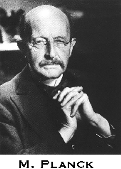Quantum mechanics  Exactly, the common idea is that Einstein means relativity; as everybody knows, relativistic effects appear at high velocities near the speed of light, in cosmic dimensions and the gravitational field of large masses. Our macromolecules - however large relatively - are tiny and move rather slowly (the fastest local motions being about c.10-8): their speed does not approach to that of light even when we toss them into trash, disgusted by their lack of properties we wished. Exactly, the common idea is that Einstein means relativity; as everybody knows, relativistic effects appear at high velocities near the speed of light, in cosmic dimensions and the gravitational field of large masses. Our macromolecules - however large relatively - are tiny and move rather slowly (the fastest local motions being about c.10-8): their speed does not approach to that of light even when we toss them into trash, disgusted by their lack of properties we wished.
The general relativity theory can be considered as a theory of gravity, an interaction, which (as everybody may not know) has not yet been successfully unified with the three other types of fundamental
interactions (electromagnetic, strong and weak). The structure and dynamics of molecules (including our large ones) is based almost exclusively on the electromagnetic interaction, which is described with remarkable precision, even for multiparticle systems, by quantum mechanics, which - as again everybody knows - Einstein not only did not create but even rejected. However, what everybody knows is not necessarily always true - as in the present case.
|







 Without Einstein, without his interpretation of Planck’s quantizing of light, quantum mechanics would hardly have been formed. Yes, he rejected the Copenhagen interpretation, but that is another story; besides, his objections are still alive and some of them (recall the Einstein-Podolsky-Rosen paradox) serve as a fountain of new discoveries just now.
Without Einstein, without his interpretation of Planck’s quantizing of light, quantum mechanics would hardly have been formed. Yes, he rejected the Copenhagen interpretation, but that is another story; besides, his objections are still alive and some of them (recall the Einstein-Podolsky-Rosen paradox) serve as a fountain of new discoveries just now.